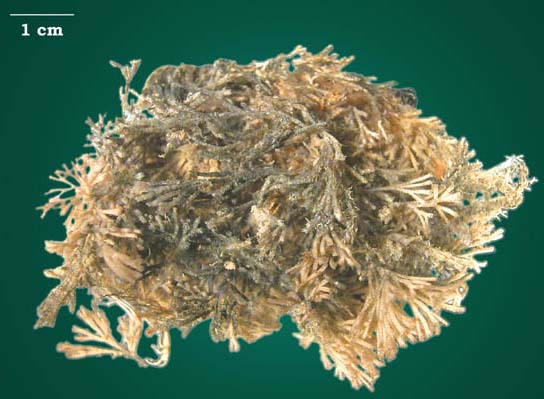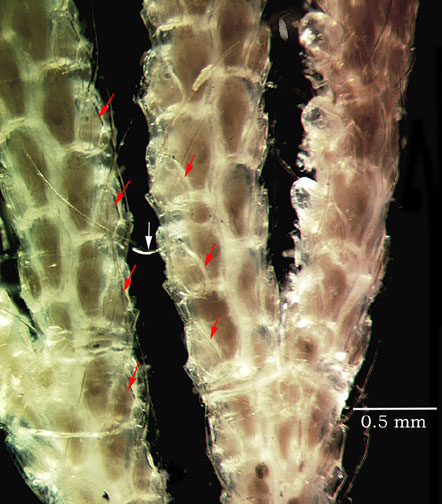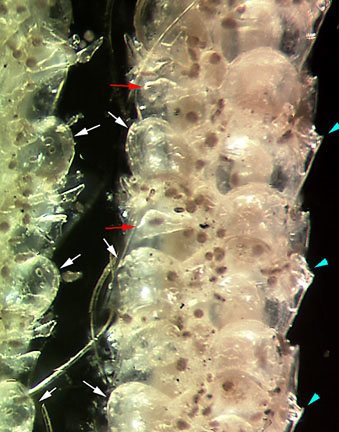Scrupocellaria diegensis Robertson, 1905


Scrupocellaria diegensis dorsal view
Although it is possible that this species was an early introduction to the Bay Area, the fact that it was first described in 1905 with the additional information that it ranged from San Francisco Bay to San Diego suggests that it is native to California. It is therefore useful to provide some information that could be used to distinguish S. diegensis from possible alien bryozoans. In Bryozoa the dorsal side of the zooecium is opposite to the side on which the aperture is located. This view shows the biserial arrangement of the zooecia and the branching pattern at the joints that is a characteristic for the genus Scrupocellaria. The exceptionally large vibracula (highly modified avicularia from which are set freely articulating setae; several examples are indicated by the red arrows) help to identify this specimen as S. diegensis. Here the setae, which are analogous to the mandibles of an avicularia, are long and whip-like. An example of a seta is indicated by the white arrow.

Scrupocellaria diegensis ventral view
The ventral side is defined as the location of the aperture. The hydrostatic action that enables the protrusion and retraction of the feeding tentacles in Bryozoa with rigid body walls requires that some portion of the zooecium be soft and flexible. In this group, anascan cheilostomes, there is a flexible frontal membrane on the ventral surface of each zooecium. Several Scrupocellaria species have perforate ovicells (white arrows) and large frontal membranes protected by a modified spine called a scutum. In S. diegensis, the scuta (the red arrows indicate two somewhat worn examples) are ovoid in shape, and more than half the size of the opesia, the large orifices underlying the frontal membranes. Other species level characteristics that help to identify this specimen as S. diegensis include the giant lateral avicularia (blue darts), and the arrangement of the frontal spines, some of which can be seen to bifurcate.
